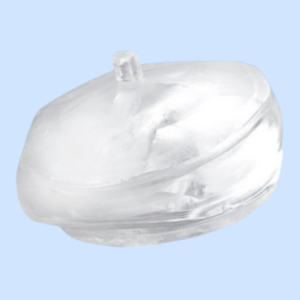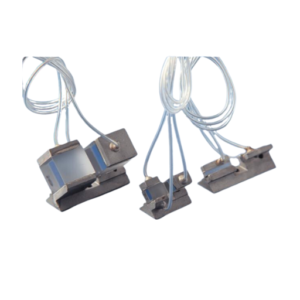Monolithic KTP Crystal
KTP is a type of non linear crystal specifically used for doubling solid state lasers such as Nd:YAG. It is also widely recognized for highly efficient OPO, SHG and quantum applications.
KTP (Potassium Titanyl Phosphate) is a nonlinear optical material generally used for frequency conversion of solid-state lasers, such as Nd:YAG.
Key Features
- High Second Harmonic Generation (SHG) Efficiency: KTP boasts an SHG coefficient approximately three times higher than KDP (Potassium Dihydrogen Phosphate), making it highly effective for frequency doubling applications.
- High Laser Damage Threshold: With a robust laser damage threshold, KTP can withstand high-power laser operations without degradation, ensuring reliability in demanding optical setups.
- Exceptional Environmental Stability: KTP is non-hygroscopic and highly stable against thermal, chemical, and mechanical influences, ensuring long-term performance in various environments.
- Large Aperture Sizes: Available in large apertures up to 50×50 mm, KTP supports a wide range of high-power and high-efficiency optical applications.
- Versatile Application: KTP crystals are suitable for a variety of nonlinear optical processes, including SHG (Second Harmonic Generation), OPO (Optical Parametric Oscillation), OPA (Optical Parametric Amplification), and PPKTP (Periodically Poled KTP) applications, making it ideal for use in both research and commercial quantum and photonic technologies.
Specifications
- Aperture: Up to 40 mm x 40 mm.
- Length: Up to 40 mm.
- Flatness: λ/4 @ 633 nm.
- Perpendicularity: < 10 arc minutes.
- Laser-Induced Damage Threshold (LIDT): 1 GW/cm² @ 1064 nm for 10 ns pulses at 10 pps.
- Parallelism: 20 arc seconds.
- Anti-Reflection (AR) Coating: Dual-Band Anti-Reflection (DBAR).
- Surface Quality (Scratch/Dig): 10/5.
- Wavefront Distortion: λ/4 @ 633 nm.
- Absorption Coefficient:
- < 100 ppm/cm @ 1064 nm.
- < 1000 ppm/cm @ 532 nm.










